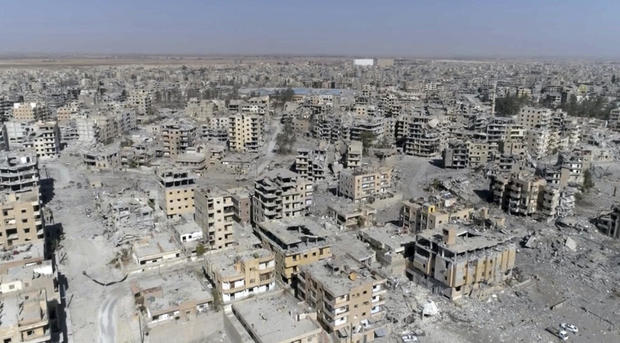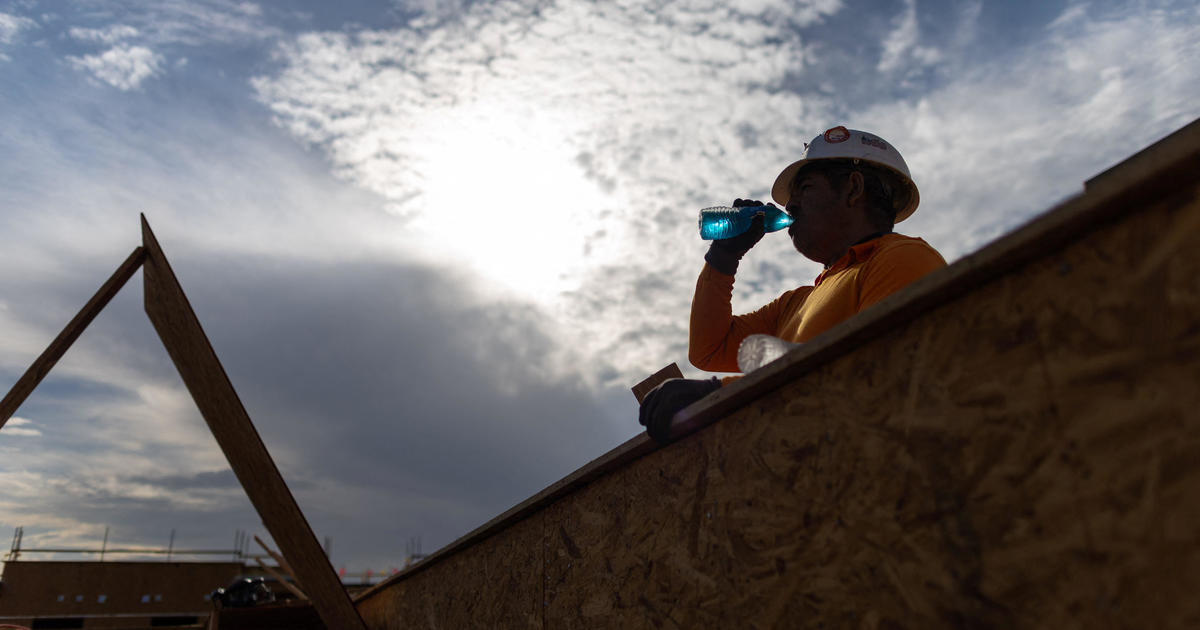Battle for Raqqa offers "cautionary tale" on harm to civilians in urban combat, report says
The U.S.-led coalition's campaign against ISIS in Raqqa, Syria, contributed to the leveling of the city and presents a "cautionary tale" for future conflicts in urban settings, a new report has found.
The report released by RAND on Thursday concluded the Defense Department made efforts to prevent civilian harm in the 2017 battle for Raqqa, but there remains room for improvement.
The battle for Raqqa - the last major city held by ISIS in Syria and considered the caliphate's administrative capital - resulted in as many as 1,600 civilian casualties and destroyed an estimated 60-80% of the city, leaving it uninhabitable, according to the RAND report.
The RAND report was sponsored by the Defense Department and will be incorporated in the Pentagon's initiatives to prevent civilian casualties in US airstrikes, Pentagon spokesperson John Kirby said in a press briefing Thursday.
"No other military works as hard as we do to mitigate civilian harm and yet we still cause it," Kirby said.
The battle for Raqqa played out from June to October 2017 with the coalition playing a supporting role for the Syrian Democratic Forces. The coalition hit ISIS with airstrikes and shell fire until the last of the militants left Raqqa in October 2017.
A 2018 report from Amnesty International accused the coalition of showing little regard for civilian lives and reduced the city to rubble.
The RAND report released Thursday found that to shorten the counter-ISIS campaign, the coalition chose to encircle ISIS instead of wage a battle of attrition. The decision to encircle ISIS pushed the militants farther into the city and prevented the construction of humanitarian corridors to help civilians evacuate. Taking the time to push militants into rural areas could have mitigated civilian harm.
To prevent risks to its own forces, the coalition decided to limit the presence of its own ground forces. This decision prevented the forces conducting strikes from having reliable information to discern between combatants and civilians in the dense urban environment.
For the battle on the ground, the coalition relied on its partnership with the Syrian Democratic Forces (SDF.) The partnership likely increased civilian harm for two reasons, the report found.
The SDF were insufficiently trained on civilian-harm mitigation. Beyond providing a one-hour training session on the law of war, the coalition did not systematically train the SDF. In addition, the coalition conducted "self-defense" strikes to protect the SDF on a compressed timeline with limited intelligence due to the lack of ground forces which increased the risk of harm to civilians.
The report offers the Defense Department several recommendations to reduce harm. One suggests wargamers ask whether there is an opportunity to push an enemy out of urban areas prior to encircling. Another suggestion is to harness the open source intelligence provided by social media platforms to paint a picture of the environment if there are limited ground forces. .
The final recommendation is that the Pentagon actually apply the lessons learned from analyses like this one. The lack of progress on the issue is a result of "weak institutional learning."
"Without a strengthened learning process, there is a real risk that the tragic circumstances seen in Raqqa will be repeated," the report stated.




